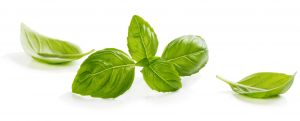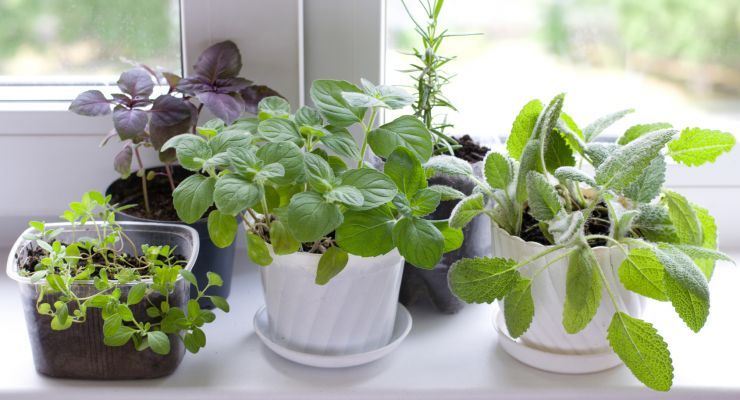You don’t have to have a big backyard to grow some herbs, in fact these herbs tend to grow quite well indoors, and they also offer numerous healing benefits. Just imagine, instead of driving somewhere or purchasing online and waiting, all you’ll have to do when you’re looking for a natural healing alternative is to walk a few steps and harvest!
Chives
Chives grow almost anywhere, and they’re incredibly healing too. They contain a good amount of vitamin K which can help limit neuronal damage in the brain, and are an especially good source of vitamin A, with 145 percent of the daily recommended value in a half-cup. Chives also contain carotenes, flavonoid antioxidants like lutein and zeaxanthin which help protect you from mouth and lung cancers. They provide anti-inflammatory, antibiotic, antibacterial, antiviral, antifungal, and antimicrobial properties too.
When your chives are ready, harvest at the base, no more than one-third of the bunch at a time. They make a fantastic garnish for a green salad and are also ideal sprinkled on baked potatoes, a creamy potato soup or grilled fish.
Mint
Growing mint indoors is a good idea for just about everyone as keeping it in a container prevents it from growing all over the yard and garden. Plus, mint has a multitude of medicinal benefits. It contains menthol, which acts as a decongestant for breaking up mucus while providing a cooling effect that can provide relief for a sore throat.
Mint is also calming and soothing to the digestive system, used for thousands of years for treating indigestion and stomach upset as well as relief from bloating and gas. If you suffer from irritable bowel syndrome it may ease the symptoms, as one study found that 75% of volunteers suffering from IBS who ingested mint experienced at least a 50% reduction in symptoms, compared to zero change in those who took a placebo.
You can make a tea using your mint leaves simply by washing and tearing them up, placing them in a cup and pouring boiling water over them. Allow it to steep for 5 to 7 minutes, and enjoy. Mint leaves can also be added to a smoothie, tossed onto a salad or added to sparkling water for a refreshing drink
Parsley
Parsley is also incredibly easy to grow, inside or out. Just keep in mind that if you start it from seed, soak the seeds in warm water first in order to crack the seed coat. Packed with rich nutrients that offer antiseptic and anti-inflammatory properties, it has so many documented health benefits that it’s frequently referred to as a superfood. According to a report in the Journal of Traditional Chinese Medicine, parsley has been used as “a treatment for gastrointestinal disorders, hypertension, cardiac disease, urinary disease, diabetes and multiple dermal diseases in traditional and folklore medicines.”
Just some of the ailments parsley can treat include chronic inflammation, bladder infections, digestive woes like IBS, kidney stones, arthritis, bloating, constipation and skin conditions.
There are practically endless options when it comes to incorporating parsley into your diet. You can add it to a salad or smoothie, use it in pasta dishes, stews and steeps or add flavor to vegetables, rice, fish, poultry and grass-fed beef.

Basil
Basil can be grown indoors by using one of the smaller globe types. Avoid the larger types, otherwise, you’ll end up with space issues. It’s not only a great herb to have on hand for culinary uses, but it offers a myriad of health benefits. There are actually 35 different types of basil, with holy basil offering some of the most potent medicinal properties.
Scientific studies have shown that holy basil contains antioxidant, analgesic and anti-inflammatory properties, with the ability to fight cancer, reduce pain, lower the risk of developing diabetes, support the liver and boost the immune system. Highly regarded in Ayurvedic medicine, it can be especially effective for treating fatigue, though it also is outstanding for managing blood sugar and reducing cortisol levels, a stress hormone that contributes to weight gain and obesity, lowers immune function, negatively impacts bone density, and harms memory and learning abilities.
Basil is considered an important herb in many types of cuisines, including Italian, Thai, Indian and Vietnamese. It can be added to sauces, used to flavor meats and stews, sipped as an herbal tea and much more.
Thyme
Thyme is another herb that’s commonly used for cooking, while also offering a multitude of health benefits. It can thrive in pots as small as four to six inches making it easy to grow indoors as well. The flowers, leaves, and oil of thyme are commonly used as a remedy for treating a variety of conditions, including diarrhea, arthritis, colic, sore throat, cough, and bronchitis.
According to research from the University of Belgrade in Serbia, consuming thyme may help to protect against high blood pressure as the leaves are one of the richest sources of potassium, which is an important component of cell and body fluids that help control heart rate and blood pressure. The herb is jam-packed with vitamin B6 which helps to maintain GABA (a beneficial neurotransmitter in the brain) levels which in turn aids in relieving stress.
Thyme can be used in many different ways, including imparting an intense flavor to recipes or used as a tea by pouring boiling water over the thyme leaves.
Ginseng
Growing ginseng is easy to do indoors as well, but it does require some patience as the seeds can take as long as 18 months to germinate. Planting purchased seedlings is much less time-consuming, but it’s quite a bit more expensive. Growing it at home is well worth the wait, however, as it’s the most powerful adaptogen herb there is.
Ginseng supports heart health by reducing cholesterol and providing antihypertensive effects, and it lowers the risk of stroke, thanks to its anti-inflammatory and antioxidant properties, which have been shown in studies to help prevent neuronal death as a result of a stroke. It increases alerts, improves thinking and can even reduce the instance of catching a cold. The herb has even been shown to stimulate the immune system, with studies finding that those who take it generally experience fewer colds, and if they do come down with one, they tend to be shorter in duration. Research published in the Canadian Medical Association Journal found that volunteers who took 400 milligrams of ginseng a day for four months during the cold and flu season, reported fewer, milder and shorter colds, as well as fewer symptoms.
The main way to use ginseng is to make a tea from it. Start by peeling the fresh root and then grate it and place it into a tea ball or filter. Bring water to a boil, but then allow it to cool for a few minutes before pouring it into your cup with the tea ball or filter inside. Let it steep for 5 to 7 minutes and then enjoy.
So, what are you waiting for, start growing these delicious and nutritious herbs in a sunny window today!
-Susan Patterson

